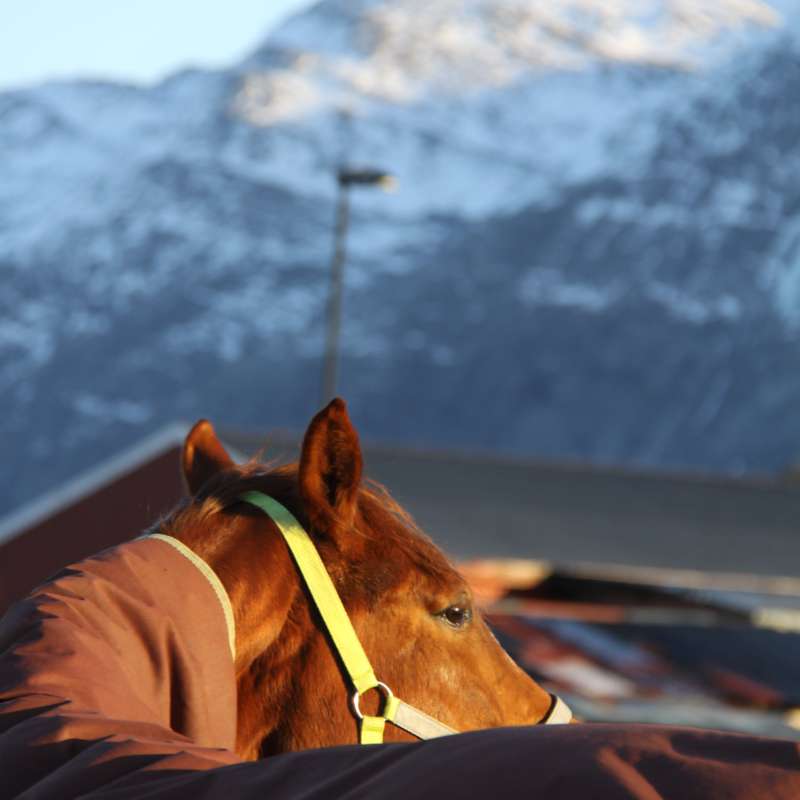Grete H. M. Jørgensen
Forsker
Biografi
Utdanning og interesseområder:
PhD innen etologi, husdyrmiljø og dyrevelferd. Har jobbet mye med termoregulering, klima, sensorteknologi og dyrs preferanser. PhD prosjektet omhandlet fysisk og sosialt miljø til sau i innefôringsperioden.
Nøkkelkvalifikasjoner:
- Lang erfaring som prosjektleder i NIBIO. Har i tillegg hatt verv i Forskerforbundet.
- God kompetanse mht. elektronisk databehandling og statistisk analyse.
- Vitenskapelig veileder for en rekke bachelor og mastergradsstudenter. En god del erfaring som foreleser og sensor for flere høgskoler og universiteter.
- Bredt nettverk og internasjonale publikasjoner på mange husdyrarter.
- Termoregulering og sosial adferd hos hest
- Måling av klimagassutslipp fra drøvtyggere (respirasjonskammer og SF6 metoden)
- Sensorteknologi
- Reindrift , HMS og produksjon
- Person med særskilt kontrollansvar for dyrevelferdsenhet ved NIBIO, og i godkjent forsøksdyravdeling ved stasjon Tjøtta.
Forfattere
Åsa Maria Olofsdotter Espmark Endre Grimsbø Tor-Atle Mo Kristin Opdal Seljetun Sonal Jayesh Patel Espen Rimstad Marco Antonio Vindas Erik Georg Granquist Grete H. M. Jørgensen Janicke Nordgreen Ingrid Olesen Sokratis Ptochos Amin SayyariSammendrag
Det er ikke registrert sammendrag
Forfattere
Åsa Maria Olofsdotter Espmark Endre Grimsbø Sonal Patel Espen Rimstad Kristin Opdal Seljetun Marco Vindas Erik Georg Granquist Grete H. M. Jørgensen Janicke Nordgreen Ingrid Olesen Amin Sayyari Tor Atle MoSammendrag
VKM has assessed animal welfare during stunning and killing of farmed fish in Norway. This report gives an overview of species differences which have significance for the slaughter procedures. The general conclusion is that there is a general lack of scientific documentation to meet the legislation stating that fish must remain unconscious after stunning until death by exsanguination. VKM also finds a risk of reduced animal welfare due to lack of documentation of the time from gill or cardiac cutting to cessation of brain activity. Further research and documentation are needed to understand how different behavioural and physical measurements conducted at the slaughter facility, correspond with the electroencephalogram (EEG) measurements of unconsciousness.
Forfattere
Hilde Margrethe Helgesen Grete H. M. Jørgensen Bjørn Egil Flø Habtamu Alem Divina Gracia P. Rodriguez Ellen Elverland Ragnhild BorchseniusSammendrag
I en tid der mange melkebønder sliter tungt og jobber mye på bekostning av familie og helse, blir spørsmålet om det er mulig å drive bærekraftig melkeproduksjon stadig mer aktuelt.

Divisjon for matproduksjon og samfunn
Giving the horse a voice - Horse welfare and owner awareness

Divisjon for matproduksjon og samfunn
Gi hesten en stemme - Hestevelferd og eierbevissthet
Dette er et internasjonalt forskningsprosjekt finansiert gjennom Stiftelsen Hästforskning med midler både fra svenske og norske bidragsytere. Prosjektet går over tre år og har som hovedformål å undersøke hvordan man kan bidra med forbedret hestevelferd ved å øke menneskers bevissthet og dypere forståelse for hva en hest er og dens kognitive evner. Prosjektpartnerne er NIBIO, Norges Miljø og Biovitenskapelige universitet (NMBU), Veterinærinstituttet (VI), Ridskolan Strømsholm Flyinge (RSFlyinge) og Malmø Universitet (MU). Prosjektet har i tillegg knyttet til seg profesjonell hestetrener Turid Buvik fra Trondheim Hundeskole, som hestefaglig ansvarlig for operativt design og trening av hestene i symbolmetoden.

Divisjon for skog og utmark
DIGI-Rangeland
Hvordan kan nye digitale verktøy være til hjelp for utmarksbeitebonden? DIGI-Rangeland er et europeisk nettverksprosjekt. Her skal kunnskapsdeling og kommunikasjon mellom ulike aktører i utmarka være et utgangspunkt for arbeidet med å forstå hvordan nye digitale verktøy kan være til hjelp for utmarksbeitebonden. Det er 10 ulike land med i prosjektet (Frankrike, Romania, Hellas, Spania, Kroatia, Slovenia, Bulgaria, Island, Norge, UK og Sveits).
